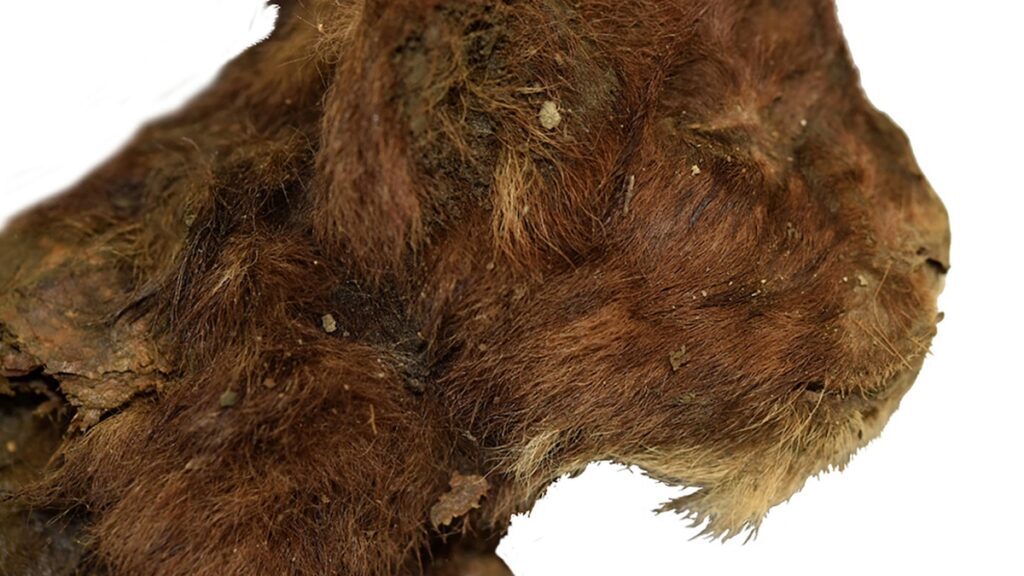The frozen cub not only provides the first look at what a saber-toothed cat looked like in real life, Reynolds notes, but also represents a life stage that paleontologists know less about, as most fossils are from adult animals.
Seeing a sabertooth fur real
Lopatin and his coauthors identified the cub as a baby Homotherium latidens. The carnivore, sometimes called a scimitar-toothed cat for its shorter, serrated canine teeth compared to the “dirk-toothed” Smilodon, was a lanky and wide-ranging predator that was better suited to running after prey than the ambush techniques used by the famous Smilodon. Found in both Eurasia and North America, the cat hunted juvenile mammoths and other megafauna. Fossil sites such as Friesenhahn Cave in Texas indicate that the felines sometimes made dens in caves to raise their cubs.
Without fossils that preserve soft tissue like fur, muscle, and skin, paleontologists have debated what Homotherium would have looked like. For example, illustrators have often depicted sabertooths with the tips of their canines sticking out below their muzzles, which may have been true for some species like Smilodon. But a 2022 analysis suggested that Homotherium had deep muzzles, where the cat’s sabers were “concealed weapons” covered by the upper lip when the mouth was closed.
Even with the mummy, the question of whether Homotherium adults had covered fangs is challenging. Lopatin notes that the upper lip of the cub is more than twice as deep as that of a modern lion cub, further hinting that Homotherium had lips capable of concealing the long canine teeth that they would later grow. Reynolds cautions, however, that the cub did not have its adult teeth yet. Only a mummy of an adult Homotherium can settle that debate. The “saberkitten” suggests that an adult Homotherium mummy could be awaiting discovery, as well.
In other respects, the cub’s anatomy confirms what paleontologists expected from bones. “The cub had the enlarged neck muscles thought to occur in adults, and also had long, muscular forelimbs seen in adult Homotherium,” says Margaret Lewis, a paleontologist at Stockton University in New Jersey who was not involved in the new study. The juvenile’s jaw was also capable of wide gapes that adult Homotherium used to bite into prey, she notes.


